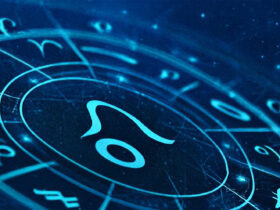A Medicine of Immortality

Like other Eucharistic miracles that have occurred throughout the history of the Church, the miracle at Sokółka is a special revelation of the power of Almighty God who calls us all to conversion; it also serves us an object lesson.
Through extraordinary signs such as Eucharistic miracles, Christ confirms that the Eucharist is a re-presentation of His passion, death, and resurrection. Under the appearances of bread and wine, He is truly present in His risen and glorified humanity.
The suffering heart of Jesus
Let us briefly summarize the results of the scientific studies conducted on the three most famous Eucharistic miracles. Like the recent miracle at Sokółka, the Eucharistic miracle at Buenos Aires (1996) occurred after a consecrated Host, profaned by unknown perpetrators, was changed into human heart muscle tissue. This was determined in 1999 by a team of American researchers in New York under the direction of the well-known cardiologist and forensic pathologist Professor F. Zugibe. The scientists examining the delivered sample had no idea where it came from. They determined that the material analyzed was a fragment of heart muscle tissue found in the wall of the left ventricle, close to the valve. The muscle was in an inflammatory state and contained a large number of white cells, thus indicating that the heart was alive at the moment the specimen was taken. The fact that the white cells had entered the tissue was evidence that the heart was suffering intensely, as it would, for example, when one was struck hard on the rib cage.
Perhaps the most famous Eucharistic miracle occurred in the eighth century in Lanciano, Italy. A Basilian monk saying Holy Mass was experiencing doubts as to whether, at the moment of elevation, the bread really became the Body of Christ, and the wine His blood. As he pronounced the words of consecration, the bread changed into Flesh, and the wine blood—and this in such a way as to be verifiable by the human senses.
On November 18, 1970, Pope Paul VI instructed a group of Italian scientists to conduct a thorough analysis of the Eucharistic species. Completed on March 4, 1971, the scientific findings confirmed the traditional belief. From a scientific standpoint the miraculous Host contained a complete human heart. All the elements comprising that muscle were present in it. The studies indicated that the heart was mummified (though no trace of mummifying agents was found), bore no signs of an incision, and that its tissue contained living protein. Preserved also were five globules of coagulated human blood in its normal chemical composition, of the AB group—the same blood group as found on Shroud of Turin, the burial cloth in which the dead body of Jesus was wrapped and upon which His image appears as a photographic negative. In 1976, the UN appointed medical doctors to verify the 1971 findings. They took samples of the flesh and blood from the Lanciano Eucharistic miracle and analyzed it. The results of their studies confirmed the expert opinion of the Italian scientists.
In Sokolka, a large central portion of the Blessed Host was changed into the muscle tissue of a human heart in a state of agony and great suffering. The structure of the heart muscle fibers was so closely integrated with that of the wafer as to exclude any possiblity of human interference.
What more could Jesus have done for us?
Through extraordinary signs such as these Eucharistic miracles, Christ wants to bring clearly back to our awareness the fact that the Eucharist is a sacramental re-presentation of the entire drama of His passion, death, and resurrection. In this way, all of us are able to participate in Christ’s victory over death, Satan, and sin. “What more could Jesus have done for us?” writes Blessed John Paul II in his encyclical on the Eucharist. “Truly, in the Eucharist, he shows us a love that goes ‘to the end’ (cf. Jn 13:1), a love that knows no measure” (EE, 11). “The Eucharist,” he observes, “is the sacrifice of the Cross perpetuated down the ages. (…) When the Church celebrates the Eucharist, the memorial of her Lord’s death and resurrection, this central event of salvation becomes really present and ‘the work of our redemption is carried out’ (EE, 11). Thus, the sacrifice of the Cross does not remain confined to the past, since “all that Christ is – all that he did and suffered for all men – participates in the divine eternity, and so transcends all time” (EE, 11).
In God, there is no past or future, only an eternal “now.” That is why Jesus Christ, being true God and true man, took upon Himself all the pain and sin of every human being, dead, living, and yet to live. During His passion and death on the cross, He experienced the consequences of the sins of all of humanity. In this experience of the greatest evil, He, being true God and true man, offered up, and continues to offer up, Himself and all mankind to God the Father. And this sacrifice, as Blessed John Paul II states, “the Father accepted, giving, in return for this total self-giving by his Son, who ‘became obedient unto death’ (Phil 2:8), his own paternal gift, that is to say, the gift of new immortal Life in the resurrection” (EE, 13).
Through His passion, death, and resurrection, Christ wiped out all our sins, soundly defeating Satan, opening the gates of heaven to all, and giving meaning to our suffering and death. Thanks to Christ, every suffering of ours (if we will offer it up to Him and unite ourselves with Him in His suffering for the salvation of the world) becomes the way of our salvation and a source of the greatest graces. Thanks also to Christ, our death becomes a participation in His final victory over death in the resurrection, if we will only place our trust in Him and reconcile ourselves through Him with the Father.
Let us remember then that whenever we are touched by any kind of suffering— particularly blameless suffering—we have an opportunity to thank Jesus for this experience and entrust it to Him, while praying: “Jesus, I unite my suffering with your suffering. I place myself entirely, along with my physical pain and spiritual torments, in your wounds, for in them there is healing.”
Antidote to death
Thanks to the sacrament of the Eucharist, we can unite ourselves with Jesus in His sacrifice on the cross, experience the joy of resurrection, and participate in the life and love of God in the One Holy Trinity. We need to remember that “The sacrifice of Christ and the sacrifice of the Eucharist are one single sacrifice” (Catechism of the Catholic Church, 1367) and that when we participate in the Holy Mass we should offer up ourselves in union with Christ to God the Father.
The Risen Christ becomes for us the Eucharist, “the bread of life” (Jn 6: 35). Jesus tells us: “I am the living bread which came down from heaven; if anyone eats of this bread, he will live for ever; and the bread which I shall give for the life of the world is my flesh” (Jn 6: 51); “Truly, truly, I say to you, unless you eat the flesh of the Son of man and drink his blood, you have no life in you; he who eats my flesh and drinks my blood has eternal life, and I will raise him up at the last day. For my flesh is food indeed, and my blood is drink indeed. He who eats my flesh and drinks my blood abides in me, and I in him. As the living Father sent me, and I live because of the Father, so he who eats me will live because of me. This is the bread which came down from heaven (…); he who eats this bread will live for ever” (Jn 6: 55-58).
“The Eucharist,” writes Blessed John Paul II, “is a straining towards the goal, a foretaste of the fullness of joy promised by Christ (cf. Jn 15:11); it is in some way the anticipation of heaven (…). Those who feed on Christ in the Eucharist need not wait until the hereafter to receive eternal life: they already possess it on earth, as the first-fruits of a future fullness which will embrace man in his totality. For in the Eucharist we also receive the pledge of our bodily resurrection at the end of the world: ‘He who eats my flesh and drinks my blood has eternal life, and I will raise him up at the last day’ (Jn 6:54). This pledge of the future resurrection comes from the fact that the flesh of the Son of Man, given as food, is his body in its glorious state after the resurrection. With the Eucharist we digest, as it were, the ‘secret’ of the resurrection. For this reason Saint Ignatius of Antioch rightly characterized the Eucharistic Bread as ‘a medicine of immortality, an antidote to death” (EE, 18).
Does this scandalize you?
The Jews were shocked and scandalized by what Jesus had to say on the subject of the Eucharist. “How can this man give us his flesh to eat?” they asked themselves (Jn 6: 60). “This is a hard saying,” said His disciples, “who can listen to it?” Jesus then proceeds to explain the essence of the Eucharist: “Do you take offense at this? Then what if you were to see the Son of man ascending where he was before? It is the spirit that gives life, the flesh is of no avail; the words that I have spoken to you are spirit and life” (Jn 6: 61-63). When Jesus says, “What if you were to see the Son of man ascending where he was before?” He alludes to the mystery of the glorification (elevation, exaltation) of His humanity (His body and blood) in His death on the cross, resurrection, and ascension into heaven.
Elsewhere, Jesus says to the apostles, “When you have lifted up the Son of man, then you will know that I am he” (Jn 8: 28), that is to say, after His death and resurrection, they will know that He is God. This reference to His elevation points to the transformation of Christ’s humanity, which will be accomplished through His death, resurrection, and ascension into heaven. It was then that the humanity of Jesus was glorified and so transformed that “all the fullness of God was pleased to dwell [in Him]”—“the whole fullness of deity [dwelled in Him] bodily” (Col 1: 19; 2: 29).
As of that moment Jesus Christ ended His visible, physical presence on earth and began a new mode of existence. After His resurrection and ascension, He was invisible, yet all present in His humanity. Thus was His real, substantial presence in the Eucharist made possible. As St. Paul writes, “He who descended is he who also ascended far above all the heavens, that he might fill all things” (Eph 4: 10).
Christ’s humanity (His body and blood) in His death, resurrection, and ascension was glorified by the Holy Spirit and became real spiritual food and drink. The Eucharist is the Risen Christ in His glorified humanity who gives His entire self to us, so as to make us “partakers of the divine nature” (2 Pt 1: 4).
In instituting the sacrament of Eucharist during the Last Supper, Jesus anticipated the salvific events of His death and resurrection and gave His apostles His glorified Humanity (Body and Blood) to eat under the Eucharistic appearances of bread and wine. In the Eucharist, Christ transforms us by the power of the Holy Spirit, so that we too may even now on earth partake of the love and eternal life of the Blessed Trinity. That is why Jesus warns us, “unless you eat the flesh of the Son of man and drink his blood, you have no life in you” (Jn 6: 53). In other words, if we do not live in a state of sanctifying grace and do not receive the Eucharist believing in the mysterious presence of His Body and Blood, then we deprive ourselves of partaking of eternal life.
Upon concluding his sermon on the mystery of the Eucharist, Jesus says to His apostles, “‘But there are some of you that do not believe.’ For Jesus knew from the first who those were that did not believe, and who it was that would betray him” (Jn 6: 64). “Did I not choose you, the twelve, and one of you is a devil? He spoke of Judas the son of Simon Iscariot” (Jn 6: 70-71). Judas’ betrayal began when he refused to believe what Jesus taught on the subject of the Eucharist. So do we betray Christ when we reject or take lightly the revealed truth of His real presence in the Eucharist, or when we receive Holy Communion unworthily.






